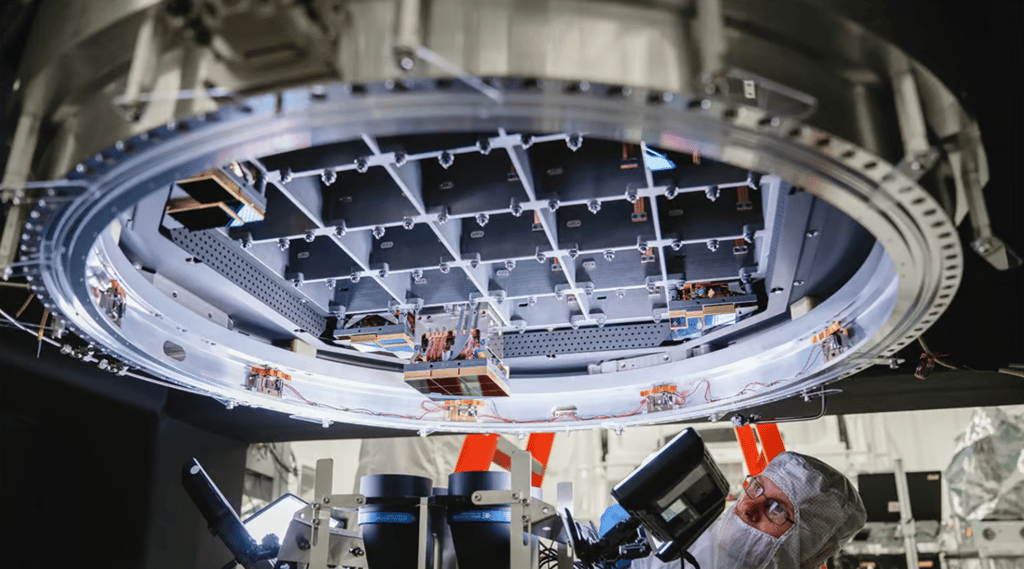
Image Credit: Farrin Abbott / SLAC National Accelerator Laboratory
Scientists have created the world’s largest digital camera. The camera features 3.2 billion pixels and was built over nine years. The LSST Camera is the largest digital camera ever built by humans for astronomy, and it will serve as the Vera Rubin Observatory’s centerpiece. The camera will begin investigating the southern skies.
What will the LSST camera do?
The camera will collect 60 petabytes of data about the universe’s composition, expansion, solar system, galaxy formation, and the nature and distribution of dark energy and dark matter.
The camera will employ a 5.1-foot-wide optical sensor to snap a 15-second exposure of the sky every 20 seconds. The camera will automatically change the filters to view light at various wavelengths, ranging from near ultraviolet to near-infrared.
It will also record transitory events so that other scientists can train their telescopes and watch changes in the southern sky.
In a SLAC statement, the University of Washington’s astronomer and head of construction of the Rubin Observatory, Zeljko Ivezic said, “We will soon start producing the greatest movie of all time and the most informative map of the night sky ever assembled.”
Aaron Roodman, SLAC physicist and camera program head, stated, “I’m personally most excited to study the expansion of the universe using gravitational lenses to better understand dark energy.”
“That means two things:
1) Measuring the brightness in all six of our filters of literally billions of galaxies and very carefully measuring their shape, which has been subtly altered by the bending of light by matter, and
2) discovering and studying very special objects where a distant quasar is almost perfectly lined up with a more nearby galaxy,” he added.
